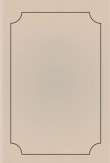قراءة كتاب The Wright Brothers' Engines and Their Design
تنويه: تعرض هنا نبذة من اول ١٠ صفحات فقط من الكتاب الالكتروني، لقراءة الكتاب كاملا اضغط على الزر “اشتر الآن"
magnitude of normal regular variations, the action could result in destructive forces in the transmission system. This was the basic reason for the Wrights' great fear of "engine vibration," which confined them to the use of small cylinders and made a fairly heavy flywheel necessary on all their engines. When they were requested to install an Austro-Daimler engine in one of their airplanes, they designed a flexible coupling which was interposed between the engine and the propeller drive and this was considered so successful that it was applied to the flywheel of some engines of their last model, the 6-70, "which had been giving trouble in this regard."[11]
Although flat, angled, and vertical engines had all been operated successfully, the best and most modern automotive engines of the time were vertical, so their choice of a horizontal position was probably dictated either by considerations of drag or their desire to provide a sizable mounting base for the engine, or both. There is no record of their ever having investigated the matter of the drag of the engine, either alone or in combination with the wing. The merit of a vertical versus a horizontal position of the engine was not analogous to that of the pilot, which they had studied, and where the prone position undoubtedly reduced the resistance.
Having decided on the general makeup of their engine, the next major decision was that of just what form the principal parts should take, the most important of these being the cylinders and crankcase. Even at this fairly early date in the history of the internal combustion engine various successful arrangements and combinations were in existence. Individual cylinder construction was by far the most used, quite probably due to its case of manufacture and adaptability to change. Since 4-cylinder engines were just coming into general use (a few production engines of this type had been utilized as early as 1898), there were few examples of en-bloc or one-piece construction. The original German Daimler Company undoubtedly was at this time the leader in the development of high-output internal-combustion engines, and in 1902, as an example of what was possible, had placed in service one that possibly approximated 40 hp, which was an MEP of 70 psi. (Almost without exception, quoted power figures of this period were not demonstrated quantities but were based on a formula, of which the only two factors were displacement and rpm.) The cylinders of this Daimler engine were cast iron, the cylinder barrel, head, and water jacket being cast in one piece. The upper part of the barrel and the cylinder head were jacketed, but, surprisingly, the bottom 60 percent of the barrel had no cooling. The cylinders were cast in pairs and bolted to a two-piece aluminum case split at the line of the crankshaft. Ignition was make-and-break and the inlet valves were mechanically actuated. Displacement was 413 cu in. and the rpm was 1050.
Although a few examples of integral crankcase and water jacket combinations were in use, the Wrights were being somewhat radical when they decided to incorporate all four cylinders in the one-piece construction, particularly since they also proposed to include the entire crankcase and not just one part of it. It was undoubtedly the most important decision that they were required to make on all the various construction details, and probably the one given the most study and investigation. Many factors were involved, but fundamentally everything went back to their three basic requirements: suitability, time, and cost. There was no obvious reason why the construction would not work, and it eliminated a very large number of individual parts and the required time for procuring, machining, and joining them. Probably one very strong argument was the advanced state of the casting art, one of the oldest of the mechanical arts in existence and one the Wrights used in many places, even though other processes were available. What no doubt weighed heavily was that Dayton had some first-class foundries. The casting, though intricate and not machinable in their own shop, could be easily handled in one that was well outfitted. The pattern was fairly complex but apparently not enough to delay the project or cause excessive cost.



